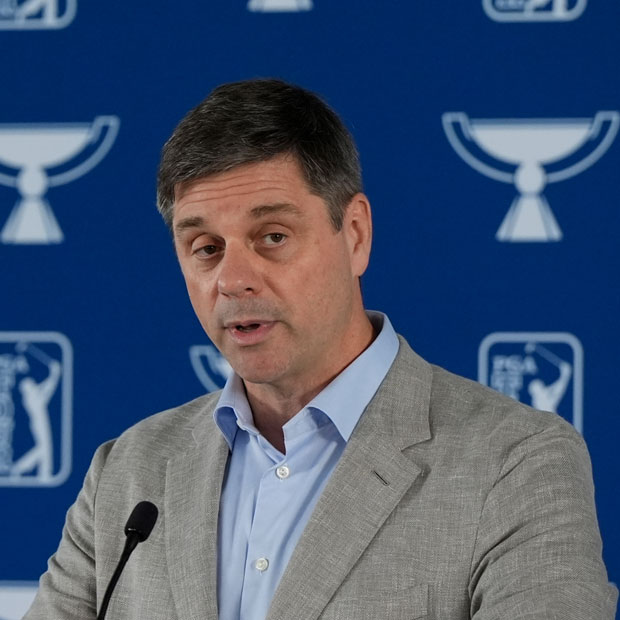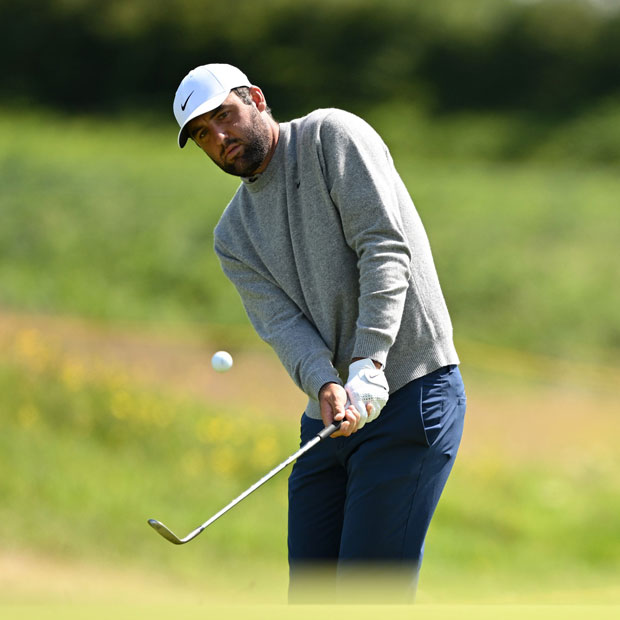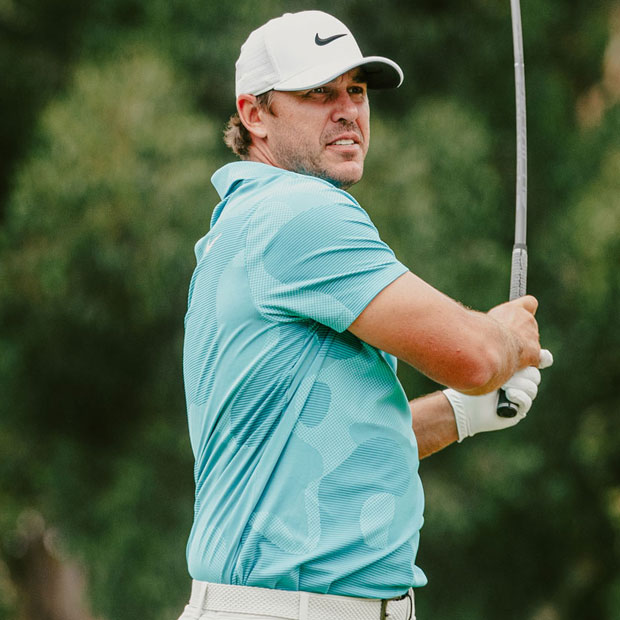The Artist’s Happy Era
Bryson DeChambeau seems, well, happy? How that outlook and a newfound strategic restraint have Bryson in contention once again


Bryson DeChambeau has spent much of this year at the majors articulating how much of a different person he is now, despite having some of the same “cells,” the term he used this week while looking back at his 2020 U.S. Open win. He does not get too introspective about it, which is fine. He’s often demurred to his equipment as a first reply when asked how he’s changed. Then comes golf course strategy, where he says he’s become more risk-averse and thoughtful.
“I just feel like I’m a little more strategic more often than not,” he said on Tuesday. “I’m not such a risk taker.” He’s shown off this approach for two rounds at a course where the throttle cannot always be down. He’s got as much power as anyone, but seems to be getting even better at knowing when to use it. Following him for his final 12 holes was an absolute thrill ride in some of the more challenging conditions he’s likely confronted in years, on a course that is not necessarily playing to all his strengths. It was a brutally hot day to walk a tightrope, and after some disappointing bogeys and hanging-on-for-dear-life pars, his round really flipped to the positive side at the 12th. He made a late club change on the tee box before bunting a wood 314 yards (yes, that’s a bunt for him) into the fat part of the fairway. He then threw an approach from 160 yards into the middle of the green, not challenging flags hardly at all, at least on purpose.
“I’m sure you guys see I’m not really going at flags for the most part, trying to hit it to 20 feet, make a 20-footer,” he said after the round. “My long putting game has to be good this week, and that’s going to be the goal.” After that strategic play into 12, he made the 18-footer for birdie, and followed it with another at 13 to secure his place near the top of the leaderboard heading to the weekend. Perhaps surprisingly, his under-par round played in some very tough conditions was accomplished despite negative strokes gained off the tee. This was more than just mashing. Many of golf’s speed darlings could be found near the bottom of the leaderboard and heading home for the weekend.
A nifty approach on 18 by @b_dechambeau sets up a birdie and wraps up the morning coverage.
The afternoon wave is LIVE now on @NBC. pic.twitter.com/0HRiAyDaFT
— U.S. Open (@usopengolf) June 14, 2024
It’s thrilling to watch his golf, and just as intriguing to watch how he now plays to the crowd if you know his history in these arenas. He’s always been keenly aware of the crowds. It’s hard to forget walking, and sprinting, around Caves Valley with him as he seemed to hear and bristle at every single “Brooksy” heckle, sometimes responding which only emboldened the hecklers. He still knows where all those grandstands are, but now he’s got them eating out of the palm of his hand. He knew where to turn and fist pump every time he picked up a par save or birdie putt from the cup. It was uncanny. He’s doing Happy Hours with Smylie on NBC, tweeting pictures of himself laughing it up with Faldo, fist-bumping every fan along the rope line after bogeying a par-5, and chatting with the TV reporters down the fairways in the middle of major rounds.
Just having fun pic.twitter.com/CHZjSSAt2D
— Bryson DeChambeau (@b_dechambeau) June 14, 2024
The only time he seemed to be bothered was when he went long at the 8th hole, when he turned to his caddie and said, “I don’t f**king believe it.” But he got up-and-down for an all-world par from jail (the figurative kind, not the Scheffler kind) while his playing partners made bogey (Homa) and double (Hovland) from similar spots.
You can question the authenticity of it if you want, but he seems happy. It’s not a crazy concept: being happy and comfortable might help yield some good golf. And that may have as much to do with his performance as any matured, more cerebral strategy as to how he deploys all that talent. For the third straight major, all of which have been completely different tests of golf, Bryson is in it for the weekend. The championship is more interesting for it.
For more coverage of the U.S. Open, visit the Fried Egg Golf U.S. Open hub.
Leave a comment or start a discussion
Engage in our content with thousands of other Fried Egg Golf Club Members
Engage in our content with thousands of other Fried Egg Golf Members
Get full access to exclusive benefits from Fried Egg Golf
- Member-only content
- Community discussions forums
- Member-only experiences and early access to events











Leave a comment or start a discussion
Lorem ipsum dolor sit amet, consectetur adipiscing elit. Suspendisse varius enim in eros elementum tristique. Duis cursus, mi quis viverra ornare, eros dolor interdum nulla, ut commodo diam libero vitae erat. Aenean faucibus nibh et justo cursus id rutrum lorem imperdiet. Nunc ut sem vitae risus tristique posuere. uis cursus, mi quis viverra ornare, eros dolor interdum nulla, ut commodo diam libero vitae erat. Aenean faucibus nibh et justo cursus id rutrum lorem imperdiet. Nunc ut sem vitae risus tristique posuere.